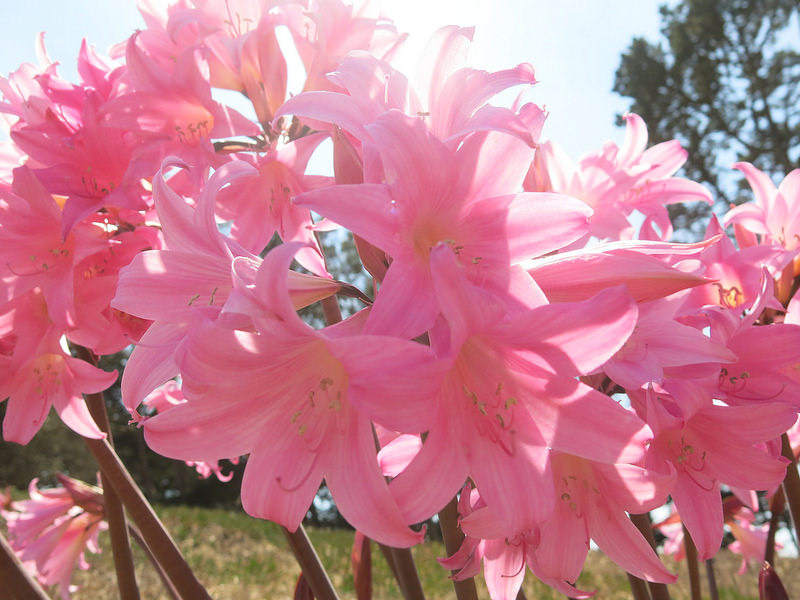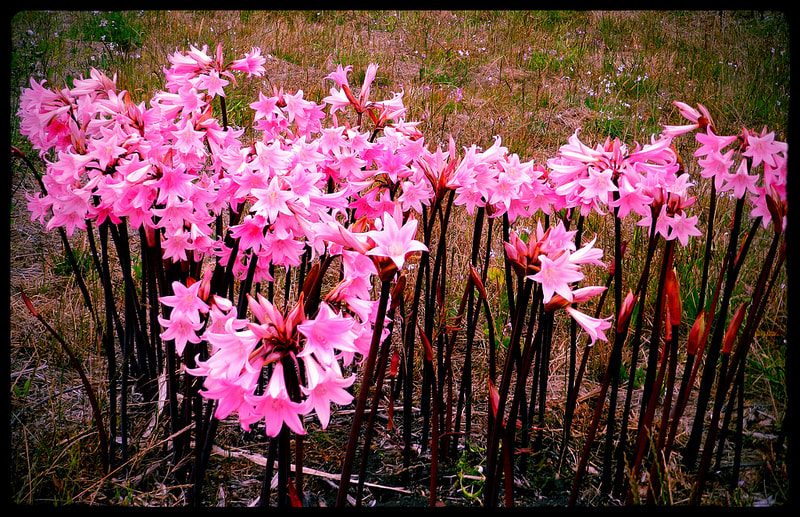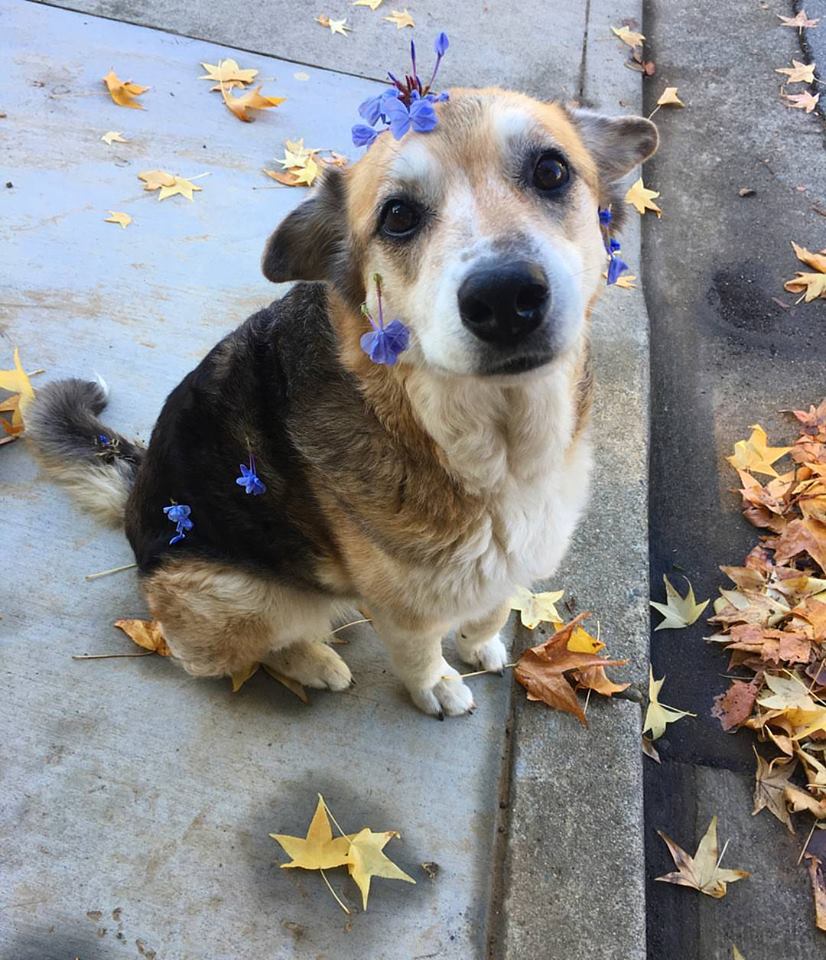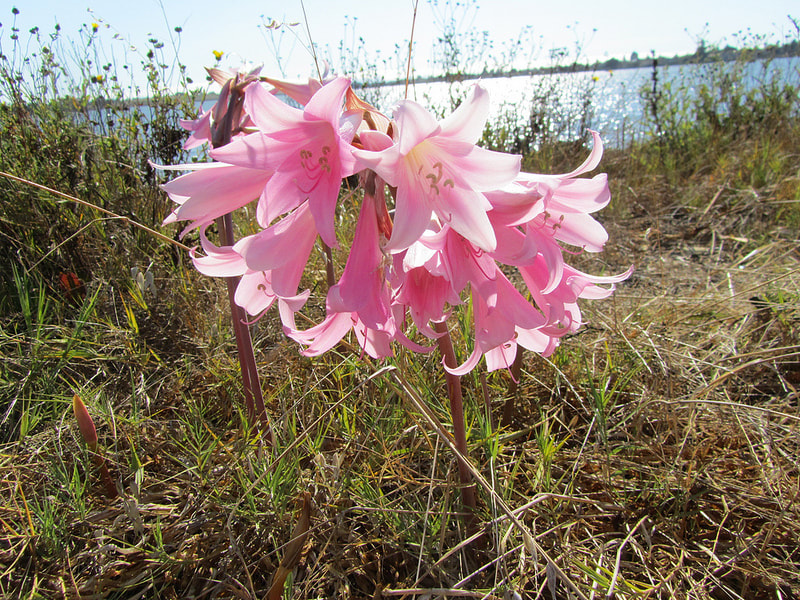|
Guys. While driving around Palo Alto this week, I saw FOURTEEN naked ladies!
It was glorious. No, I don't mean boobies. I mean the beautiful pink flower that's also known as the Belladonna Lily or Belladonna Amaryllis. In California, August (into September) is the month of the naked ladies. This nickname stems (ha) from the fact that this plant has a notable lack of leaves when it blooms. Instead, they have strap-like leaves in winter (you could easily mistake them for Agapanthus leaves). They dry up completely before the flower stem emerges. In late summer, leafless stems produce elegant, pink flowers. When I started noticing them this month, I was delighted... but part of me wondered why I felt like I hadn't seen any naked ladies in a while. It could simply be that it's been a whole year since last August. OR. It could just be that there weren't many naked ladies last year. According to The Golden Gate Gardener, one of the great mysteries of naked ladies is that is they sometimes refuse to bloom. In the wild, in the chaparrel-like fynbos of the Cape Province, they bloom only after a wildfire strikes--which happens every 5 to 40 years. In gardens, they tend to bloom every year, but if they are in shade in winter and spring, they may not bloom at all. One guess is that the wildfires remove other plants that shade the leaves in winter. The post also indicates that naked ladies are deer- and gopher-resistant. They're also pleasantly fragrant and are awesome for both ornamenting your garden and as cut flowers -- though it's worth noting that the bulb and sap are somewhat poisonous, so don't taste them. When I garden, I almost exclusively plant things I can eat, so I don't have any naked ladies of my own. However, one thing that I've loved most about this naked lady season is that it's one small way to stay... not to sound cheesy, but present and mindful. When I'm driving or walking, getting to work or completing everyday tasks and chores, I'm always on the lookout for interesting cloud formations and wildlife. I've self-studied squirrel behavior -- and possibly classically conditioned myself to be happy -- because I like to help my dog hunt Sciuridae.
The face of a killer. From: @TheHappyTalent on Instagram.
Ordering a copy of The Cloud Collector's Handbook, by Gavin Pretor-Pinney, helped me keep my head in the clouds -- in the best way possible. It's cool that I can vaguely kind of predict the weather. But it's also fun just appreciating everyday miracles by knowing a bit more about the world around me. Similarly, I've been paying close attention to the moon lately. Ever since I wrote Why You Should Drop Everything and Chase the Moon, I've been watching the moon change every night and going on night hikes (instead of watching TV, because Netflix shows have gotten offensively bad). And now... it's naked lady season. In addition to just keeping a closer eye on my surroundings and smiling each time I see one, I've also sort of gamified it a little. I'm having a competition with some of my friends to see who can spot the most naked ladies this summer. And so far, I'm definitely winning. If anyone starts to catch up, I'll have to up my dog-walking game. I might even go for a run or something. Ruby will be pleased. (And so will my body. Did you know that walking for 15 minutes after eating is basically just as healthy for you as going to the gym? And that it will literally halve the spike in your blood sugar?) And, with that, a few more fun facts about naked ladies: 1. They're the only species in the amaryllis genus -- meaning they're the 'true' Amaryllis. All those big indoor plants during the holidays are called "Amaryllis", but their botanical name is Hippeastrum. 2. Naked ladies are native to South Africa in the fynbos plant community, the equivalent of California's chaparral community. Sailors transported the bulbs to other places, with a record of the lily growing in Italy in 1714. It's naturalized in many Mediterranean-type climates, including in the United States. 3. By 1850, the bulbs were introduced to California, where they are sometimes seen blooming in places where no one lives anymore. They've survived in abandoned farm sites and on Alcatraz Island. (Though they don't generally spread far from the original planting, so if they were planted in a row, the row remains, just... bigger.) Fun, right? If you want to learn more about naked ladies, check out Pam Pierce's Wildly Successful Plants: Northern California -- or just order some naked lady bulbs for your own garden or neighborhood!
2 Comments
|
About the Author

Eva is a content specialist with a passion for play, travel... and a little bit of girl power. Read more >
Want to support The Happy Talent? CLICK HERE!
Or Find me on Patreon!
What's Popular on The Happy Talent:
Trending in Dating and Relationships:
What's Popular in Science: Playfulness and Leisure Skills:
Popular in Psychology and Social Skills:
Categories
All
|





























 RSS Feed
RSS Feed